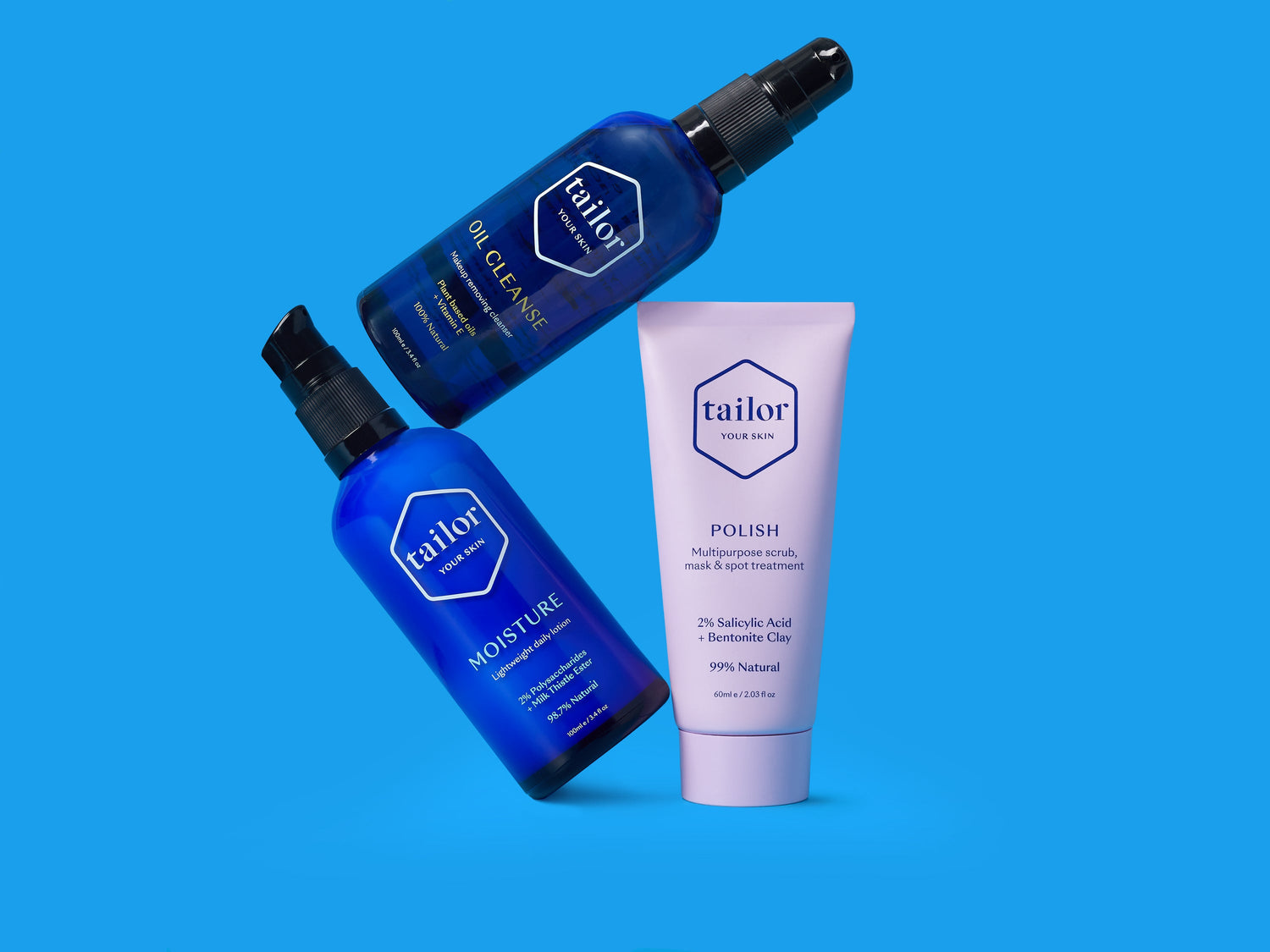When it comes to those with acne prone skin, you’ve probably tried all ingredients under the sun to help fight, reduce and prevent breakouts. Chances are that you’ve heard of, and maybe even tried, salicylic acid. It’s a go-to ingredient for many different skincare brands in many different products - cleanser, scrubs, toners and serums.
What makes this powerful active such an amazing defender against acne? And how can you best add it to your routine to help clear your skin? Keep reading to answer these common questions and more.

What is salicylic acid?
Salicylic acid is an impressive active ingredient naturally found in willow tree bark. It’s a type of chemical exfoliant called a BHA (beta-hydroxy acid). It’s often confused with well-known AHAs (alpha-hydroxy acids), such as glycolic and lactic acid, as they’re both exfoliants. However there is a major key difference - BHAs are oil-soluble and AHAs are water-soluble. AHAs are ideal for surface cleansing, loosening dead cells for fresher skin. On the other hand, BHAs work on both the surface and deeper levels to cut through oils, deeply cleanse pores and dissolve debris.
Salicylic acid is a part of the aspirin family, and contains a chemical called salicin. It has anti-inflammatory properties which soothe irritation, redness, soreness and puffiness.
What’s the difference between mechanical and chemical exfoliants?
While you might already know first-hand the benefits of exfoliation, the description of salicylic acid as a chemical exfoliant might have left you a little confused - aren’t exfoliants the ingredients you can feel buffing away at your skin in a scrub? Let’s quickly look at the difference between chemical exfoliants (like salicylic acid) and mechanical exfoliants (like pumice powder).
Mechanical or physical exfoliants are abrasive ingredients in your exfoliating scrubs that you can feel buffing your skin. They are key for removing surface level impurities, like dead or dry skin cells.
Chemical exfoliants penetrate deeper into your skin to break down the sebum and oils in your pores to fight congestion and breakouts. They help your mechanical exfoliant to remove dead skin for a brighter, fresher complexion.
When combined in a product like Polish, these two deliver superior results for acne prone, dull or flaky skin. Bonus - pumice powder also soaks up oils from your skin, which also reduces congestion and breakouts.

What are the benefits of salicylic acid?
Exfoliates dead cells
Salicylic acid is a keratolytic, which means it helps the skin to regulate the shedding of skin cells and encourages healthy cell turnover. This is key for improving skin texture and dullness.
Unclogs pores
As it is oil-soluble, salicylic acid deeply penetrates your pores to break down and dissolve keratin, the substance that causes cells to stick together. It also removes the debris from pores that cause superficial acne, like whiteheads, blackheads, and small red pimples.
Removes excess oils and sebum
Being oil-soluble is also a benefit to oily skin, as it cleanses your pores of excess oils and sebum while also suppressing the cells that produce excess sebum to reduce oiliness.
Reduces inflammation
Like others in the aspirin family, salicylic acid is anti-inflammatory. Not only does it benefit acne prone skin through it’s exfoliation, but it also reduces the inflammation and redness that comes with breakouts.
Improves product penetration
After buffing away dead skin cells, your skin can better absorb products, so the actives in your serums and moisturisers can penetrate your skin more deeply.

Is salicylic acid good for acne?
As you would’ve picked up in the list of benefits above, salicylic is a heavyweight active ingredient when it comes to preventing, fighting and reducing acne including blackheads and whiteheads.
On the surface level, it clears away any dead, dry skin cells that might clog up your pores, leading to breakouts. It’s anti-inflammatory properties soothe and calm sore breakouts, while also reducing the appearance of redness and swelling.
Going deeper, it breaks down the bonds between skin cells to help clear congestion and regulate cell turnover. It also removes excess and helps balance sebum which is a key player in causing breakouts.
Try targeting breakouts with an overnight spot treatment containing an absorbent ingredient like bentonite clay, to reduce redness, oiliness and congestion while you sleep!
Can salicylic acid cause breakouts?
It’s possible your skin might break out when you introduce salicylic acid to your skincare routine, but before you panic - you should know this is a good sign!
This BHA is penetrating your skin super deep to remove debris, impurities and congestion. In turn, this can cause your skin to ‘purge’ as all of this comes to the surface. Breakouts are simply your skin's way of pulling these impurities to the surface and pushing them out of your skin.
You can also find adding other cleansing steps to your routine such as oil cleansing can cause a ‘purge’ stage - basically anything that deeply cleanses or increases cell turnover can have this effect.
This stage can last anywhere from two - eight weeks, although most people find it subsides after four weeks, which is a typical full-cycle for your skin.
How long does it take to see results from salicylic acid?
Like any new ingredient added to your routine, it can take time and - this is important! - consistent use to see results. In fact, like mentioned above, you may even experience some breakouts initially.
As salicylic acid is an exfoliant, you should notice your skin feels smoother and softer after using it, and it may look brighter. It’s oil-dissolving qualities can also help to dry out and clear any current breakouts faster.
When it comes to preventing new acne breakouts, you’ll probably need to wait at least four weeks to see the results you’re after. As mentioned, you’ll want to keep up your consistent use of this active even once you start seeing results, to help keep your skin clear.
Research shows that 2% salicylic acid (the concentration found in Polish) can reduce the number of acne lesions after four, eight and 12 weeks, with the best results for inflammation occurring after 12 weeks.

How often should you use salicylic acid?
First and foremost - follow the instructions on the product. It should give you an indication of the best frequency of use. This is important as it will take into account the other ingredients used in the product. For example, we recommend you use Polish every second day because you wouldn’t want to use the mechanical exfoliant pumice powder on your skin daily. If you have active breakouts, try using Polish as an overnight spot treatment whenever you need it, as this will help dry out your breakouts without buffing your skin.
After considering this, also take into account your skin. As with all products, it’s best to add it to your routine slowly. Use it, then see how your skin responds. Increase or decrease frequency and amount based on your skin's response.
Also good to keep in mind - salicylic acid is an active ingredient, and might cause tingling on your skin when applied. This shouldn’t last longer than five mins. If it does, or if it gives a burning sensation, you should rinse it off.
Does salicylic acid have any side effects?
As mentioned above, salicylic acid is an active ingredient, so those with sensitive, dry or broken skin should treat it with caution. It doesn’t mean you can’t use this ingredient, but you should patch test and introduce it slowly to your routine.
Regular use can leave your skin more sensitive to the sun, as does any type of exfoliant. You should already be doing this but in case you need the reminder - don’t forget to apply SPF during the day!
Aside from this, you shouldn’t see any negative side effects from concentration of 2% or lower, which is the recommended at-home topical limit by the FDA.
Should I add salicylic acid to my skincare routine?
If your skin is oily or prone to acne, we think it’s a no-brainer - add salicylic to your routine stat!
If you’re looking to brighten, soften and smooth your complexion, this powerful active should also be on your list.
Basically, it’s a yes from us!
Boost your skincare routine by adding this double exfoliant gem to your routine today.
References
https://pubmed.ncbi.nlm.nih.gov/22808307/
https://www.ncbi.nlm.nih.gov/pmc/articles/PMC4554394/
https://www.ncbi.nlm.nih.gov/pmc/articles/PMC6785964/
https://pubmed.ncbi.nlm.nih.gov/30972839/
https://www.dovepress.com/salicylic-acid-as-a-peeling-agent-a-comprehensive-review-peer-reviewed-fulltext-article-CCID
https://www.sciencedirect.com/science/article/pii/S0273230018300424
https://www.tandfonline.com/doi/abs/10.3109/09546639609089537

